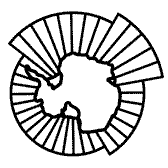Search results
-
The Ross Sea cephalopod community: insights from stable isotope analysis
on the trophic ecology of the cephalopod assemblage of the Ross Sea region is poor. Stable isotope signatures ... ecology of the cephalopod assemblage of the Ross Sea region is poor. Stable isotope signatures of nitrogen ...
Meeting Document : WG-EMM-12/55 : Author(s): D.R. Thompson, M.H. Pinkerton, D.W. Stevens (New Zealand), Y. Cherel (France), S.J. Bury (New Zealand)
-
Revised research plan for the 2013/14 exploratory longline fishery of Dissostichus spp. in Division 58.4.3a
sizes turned out to be larger in many blocks and smaller in a few blocks over the data poor-fisheries ... in many blocks and smaller in a few blocks over the data poor-fisheries. Since we have yet to obtain ...
Meeting Document : WG-FSA-13/40 : Author(s): Delegation of Japan
-
Descriptive analysis of the toothfish (Dissostichus spp.) tagging programme in Subareas 88.1 & 88.2 for the years 2000–01 to 2012–13
of being poor tag links based on growth rates and ancillary linking data). Three recaptured fish moved ... the Slope to the North, and 5 from the North to the Slope (although 4 of those are suspected of being poor ...
Meeting Document : WG-FSA-13/49 : Author(s): S. Parker, A. Dunn, S. Mormede and S. Hanchet (New Zealand)
-
Assessment of krill biomass in fishing grounds using the data on fishing intensity and hydroacoustic method
of poor swimming ability of the krill. The paper suggests the comparison of estimates of krill ... of poor swimming ability of the krill. The paper suggests the comparison of estimates of krill ...
Meeting Document : SC-CAMLR-VIII/BG/10 : Author(s): USSR
-
Revised research plan for the 2013/14 exploratory longline fishery of Dissostichus spp. in Division 58.4.1
in many blocks and smaller in a few blocks over the data poor-fisheries. Since we have yet to obtain ... in many blocks and smaller in a few blocks over the data poor-fisheries. Since we have yet to obtain ...
Meeting Document : WG-FSA-13/38 : Author(s): Delegation of Japan
-
Revised research plan for the 2013/14 exploratory longline fishery of Dissostichus spp. in Division 58.4.2
sizes turned out to be larger in many blocks and smaller in a few blocks over the data poor-fisheries ... sizes turned out to be larger in many blocks and smaller in a few blocks over the data poor-fisheries ...
Meeting Document : WG-FSA-13/39 : Author(s): Delegation of Japan
-
The breeding biology and distribution of Adelie penguins: adaptations to environmental variability
to three years of failure at "poor" sites, suggests that changes in the population distribution ... to three years of failure at "poor" sites, suggests that changes in the population distribution of Adelie ...
Meeting Document : WG-EMM-96/58 : Author(s): Fraser, W.R., Trivelpiece, W.Z.
-
Growth models for D. eleginoides for the Heard Island plateau region (Division 58.5.2) calibrated from otolith-based length at age data and validated using mark-recapture data
of 2000 mm but the fit to the data was very poor. The Akaike Information Criterion indicated ... of 2000 mm but the fit to the data was very poor. The Akaike Information Criterion indicated ...
Meeting Document : WG-FSA-05/64 Rev. 1 : Author(s): S.G. Candy, T. Lamb, A.J. Constable and R. Williams (Australia)
-
Integrating Climate and Ecosystem Dynamics in the Southern Ocean (ICED) programme: Preliminary report of the ICED–CCAMLR Projections Workshop, 5 to 7 April 2018
of food webs, with both positive and negative effects. The Workshop highlighted our poor understanding ... of food webs, with both positive and negative effects. The Workshop highlighted our poor understanding ...
Meeting Document : WG-EMM-18/09 : Author(s): E.J. Murphy, N.M. Johnston, S.P. Corney and K. Reid
-
Upward adjustments to local catch limits for the krill fishery in Subarea 48.1
on normalized CEMP parameters can be used to categorize predator performance as good (“green-light”) or poor ... predator performance as good (“green-light”) or poor (“red-light”). The approach ...
Meeting Document : WG-EMM-16/47 : Author(s): Antarctic Ecosystem Research Division, Southwest Fisheries Science Center and NOAA Fisheries

